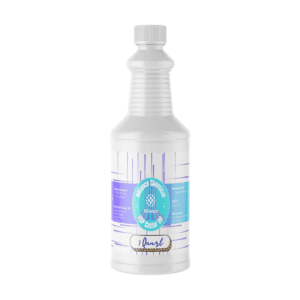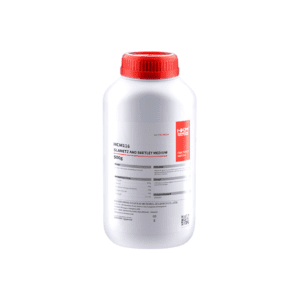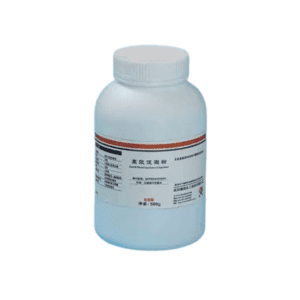Acids & Bases
Description
General Laboratory Chemicals – Acids and Bases: Essential Reagents for Chemical Reactions and pH Control
Acids and bases are integral to chemical analysis and experimentation in laboratories across a range of industries, from pharmaceuticals and biotechnology to environmental science and materials engineering. These chemicals are used to control pH, catalyze reactions, and participate in various types of chemical synthesis, titrations, and buffer preparation.
Acids, such as hydrochloric acid (HCl), sulfuric acid (H₂SO₄), and acetic acid (CH₃COOH), are compounds that release hydrogen ions (H⁺) in aqueous solutions, making them crucial for acid-base reactions. They are widely used for adjusting pH in solutions, conducting acid-base titrations, and as reagents in the synthesis of chemicals. On the other hand, bases (or alkalis), such as sodium hydroxide (NaOH) and potassium hydroxide (KOH), release hydroxide ions (OH⁻) in solution and are equally vital for neutralizing acids, creating buffers, and facilitating specific chemical reactions.
The use of acids and bases is essential in various laboratory techniques such as:
- Titration: For determining the concentration of a given solution by neutralizing it with a known concentration of acid or base.
- pH Regulation: To maintain or adjust the pH of solutions in biological, chemical, and environmental analyses.
- Buffer Preparation: Acids and bases are used to prepare buffers for controlling the pH of solutions in various experiments, ensuring the stability of proteins, enzymes, and other biological molecules.
- Chemical Synthesis: Many chemical reactions, particularly in organic chemistry, require the use of specific acids or bases to catalyze or drive reactions to completion.
Comprehensive List of Products in the Acids and Bases Category:
1. Hydrochloric Acid (HCl) – 37% Solution:
- Applications: Used in titrations, preparation of metal chlorides, and pH adjustment.
- Industries: Chemical synthesis, environmental analysis, industrial cleaning.
- Features: Commonly used strong acid for neutralization and catalyst in chemical reactions.
2. Sulfuric Acid (H₂SO₄) – 98% Solution:
- Applications: Used in chemical synthesis, petroleum refining, and battery acid.
- Industries: Chemical manufacturing, petrochemicals, laboratory experiments.
- Features: A strong, highly corrosive acid, essential in industrial applications and laboratory titrations.
3. Acetic Acid (CH₃COOH) – Glacial:
- Applications: Used in organic synthesis, buffer preparation, and as a reagent in laboratory experiments.
- Industries: Biotechnology, pharmaceuticals, food and beverage, chemical synthesis.
- Features: A weak acid, used as a solvent and reagent in various chemical reactions.
4. Nitric Acid (HNO₃) – 65% Solution:
- Applications: Used in the production of fertilizers, explosives, and metal cleaning.
- Industries: Chemical industry, agriculture, and environmental science.
- Features: A strong acid, highly reactive, used for etching and refining metals.
5. Phosphoric Acid (H₃PO₄) – 85% Solution:
- Applications: Used in food and beverage industries, rust removal, and as a pH adjuster in chemical processes.
- Industries: Food and beverage, cleaning products, chemical manufacturing.
- Features: Widely used in cleaning and food applications due to its moderate strength.
6. Sodium Hydroxide (NaOH) – 50% Solution:
- Applications: Used in soap production, pH regulation, and chemical synthesis.
- Industries: Chemical manufacturing, soap making, wastewater treatment.
- Features: A strong base, used for neutralization, deionization, and as a strong reagent in laboratory experiments.
7. Potassium Hydroxide (KOH) – 45% Solution:
- Applications: Used in the production of potassium salts, soap making, and biodiesel production.
- Industries: Chemical manufacturing, biodiesel, cleaning products.
- Features: Strong alkaline solution, commonly used for producing potassium soaps and other derivatives.
8. Sodium Bicarbonate (NaHCO₃):
- Applications: Used as a buffer, pH regulator, and in neutralization reactions.
- Industries: Food, pharmaceuticals, water treatment, and laboratory applications.
- Features: Mild base, commonly used for pH regulation and buffering in laboratory processes.
9. Ammonium Hydroxide (NH₄OH) – 30% Solution:
- Applications: Used in the production of fertilizers, household cleaners, and as a reagent in laboratories.
- Industries: Agriculture, cleaning, and chemical manufacturing.
- Features: A weak base, commonly used for cleaning and neutralizing acidic compounds.
10. Calcium Hydroxide (Ca(OH)₂):
- Applications: Used in water treatment, pH regulation, and in construction for mortar and plaster.
- Industries: Water treatment, agriculture, construction.
- Features: Also known as slaked lime, it’s used to neutralize acids and raise pH levels.
11. Citric Acid (C₆H₈O₇):
- Applications: Used as a weak acid in food and beverages, and in buffering solutions.
- Industries: Food and beverage, cleaning, pharmaceuticals.
- Features: A natural acid found in citrus fruits, commonly used for acidification and as a preservative.
12. Boric Acid (H₃BO₃):
- Applications: Used in antiseptic solutions, pH buffers, and as a catalyst in organic reactions.
- Industries: Pharmaceuticals, agriculture, and manufacturing.
- Features: A weak acid, used in laboratory settings for pH adjustment and antiseptic applications.
13. Ammonium Chloride (NH₄Cl):
- Applications: Used in buffer systems, as a pH adjuster, and in various industrial applications.
- Industries: Chemical manufacturing, pharmaceuticals, and laboratory experiments.
- Features: A salt of ammonia, often used as a buffering agent in laboratories.
14. Hydrofluoric Acid (HF):
- Applications: Used in etching glass, in fluorine chemistry, and as a catalyst in chemical processes.
- Industries: Chemical manufacturing, glass etching, semiconductors.
- Features: A highly corrosive acid, used in specialized industrial and laboratory applications.
15. Magnesium Hydroxide (Mg(OH)₂):
- Applications: Used in the preparation of antacids and as a flocculant in water treatment.
- Industries: Pharmaceuticals, water treatment, and agriculture.
- Features: A mild base, commonly used in medicinal and industrial applications.
Conclusion:
Acids and bases are fundamental chemicals in laboratory settings, used for a wide range of applications from pH regulation to chemical synthesis. Whether you’re conducting titrations, preparing buffers, or synthesizing chemicals, these reagents are indispensable in research, manufacturing, and industrial processes. The wide variety of acids and bases, such as hydrochloric acid, sodium hydroxide, and acetic acid, provide the necessary tools for controlling chemical reactions and ensuring precise outcomes across different industries.





